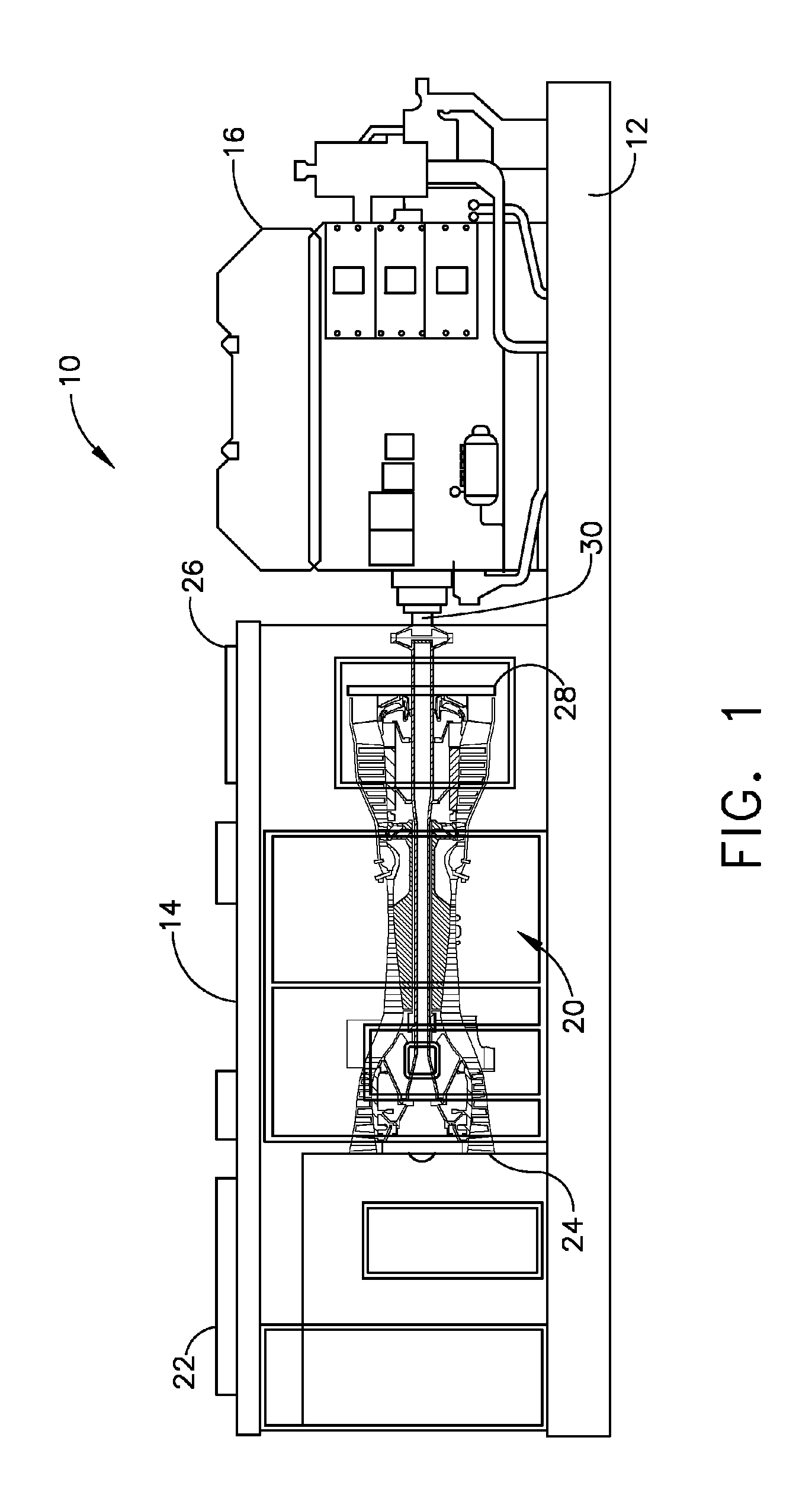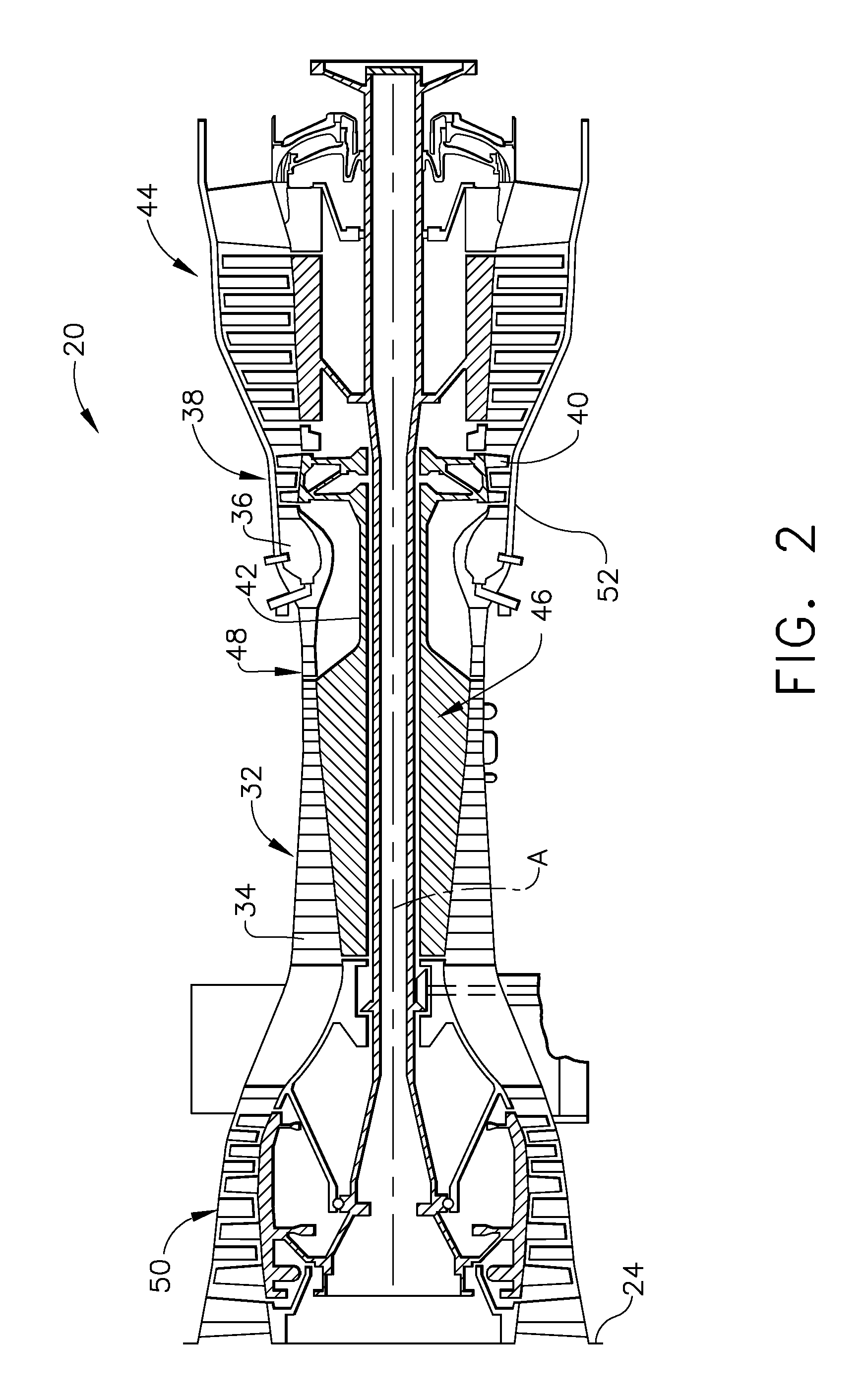Gas turbine engine lockout reduction
a gas turbine engine and lockout reduction technology, applied in the field of gas turbine engines, can solve the problems of reducing power gradually, reducing power, and causing the upper portion of the rotor to heat up and expand more than the lower portion, so as to reduce the lockout period, reduce the lockout time of the gas turbine engine, and reduce the power output level
- Summary
- Abstract
- Description
- Claims
- Application Information
AI Technical Summary
Benefits of technology
Problems solved by technology
Method used
Image
Examples
Embodiment Construction
[0016]Referring to the drawings wherein identical reference numerals denote the same elements throughout the various views, FIG. 1 depicts a genset module 10. It includes a base 12 upon which are mounted an engine enclosure 14 and an electrical generator 16. The electrical generator 16 is used as a representative example of an external load device. A gas turbine engine 20 (or simply “engine”) is disposed inside the engine enclosure 14. The engine enclosure 14 includes a combustion air inlet 22 coupled in flow communication with an inlet 24 of the engine 20, and an exhaust gas exit 26 coupled in flow communication with an exhaust duct 28 of the engine 20. The gas turbine engine 20 is coupled by an output shaft 30 to the electrical generator 16.
[0017]Referring to FIG. 2, the engine 20 includes a high pressure compressor (“HPC”) 32 carrying a number of stages of rotating compressor blades 34, a combustor 36, and a high pressure turbine (“HPT”) 38 carrying a number of stages of rotating...
PUM
 Login to View More
Login to View More Abstract
Description
Claims
Application Information
 Login to View More
Login to View More - R&D
- Intellectual Property
- Life Sciences
- Materials
- Tech Scout
- Unparalleled Data Quality
- Higher Quality Content
- 60% Fewer Hallucinations
Browse by: Latest US Patents, China's latest patents, Technical Efficacy Thesaurus, Application Domain, Technology Topic, Popular Technical Reports.
© 2025 PatSnap. All rights reserved.Legal|Privacy policy|Modern Slavery Act Transparency Statement|Sitemap|About US| Contact US: help@patsnap.com



